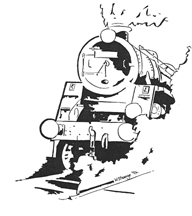





Wracking Railway (OO) | |
|
Background Story After WW2 new towns were needed as overspill for the West Midlands. Telford for the Birmingham/Wolverhampton area, and Wracking for Stoke-on-Trent a little later. Telford forged ahead, but Wracking proceeded slowly adding some new houses to supplement the terraced ones from the railway workers and some new shops on Bridge Street (A525). All this changed when Dr. Beeching dropped his rural railway axe. The line through Telford to Shrewsbury survived but was downgraded, however the Wracking link was cut at the expensive and troublesome Eglwys Tunnel, and the section from the Whitchurch side reduced to single line. The tunnel was filled in and sealed, the section beyond around Ellesmere became a scenic walk and from there to Whittington became the foundations for the realigned A495 road to Oswestry. As British Railways owned a lot of land and facilities at Wracking it remained partially open as a maintenance and refuelling depot for diesel locos, storage for carriages, and the terminus for cross country trains and local DMUs without cluttering up Crewe, which was concerned with the electrification of the West Coast Main line. For such a small facility it was always overcrowded as passengers changed trains or joined the network leaving their cars in the expansive carpark. Once the WCML was fully wired and the third generation of high speed DMUs handled cross country trains, Wracking had served its purpose and the land was sold off for commercial development. Although in a rural setting it became the focus of out of town shopping (which both Whitchurch and Ellesmere shunned). The Bridge Street shops became bijou cafes and antique markets, the original canal basin with some parking welcomed a B & Q and an Aldi grocery store, and whilst north of the A525 a Tesco Hypermarket was built. That's how it remains today! |
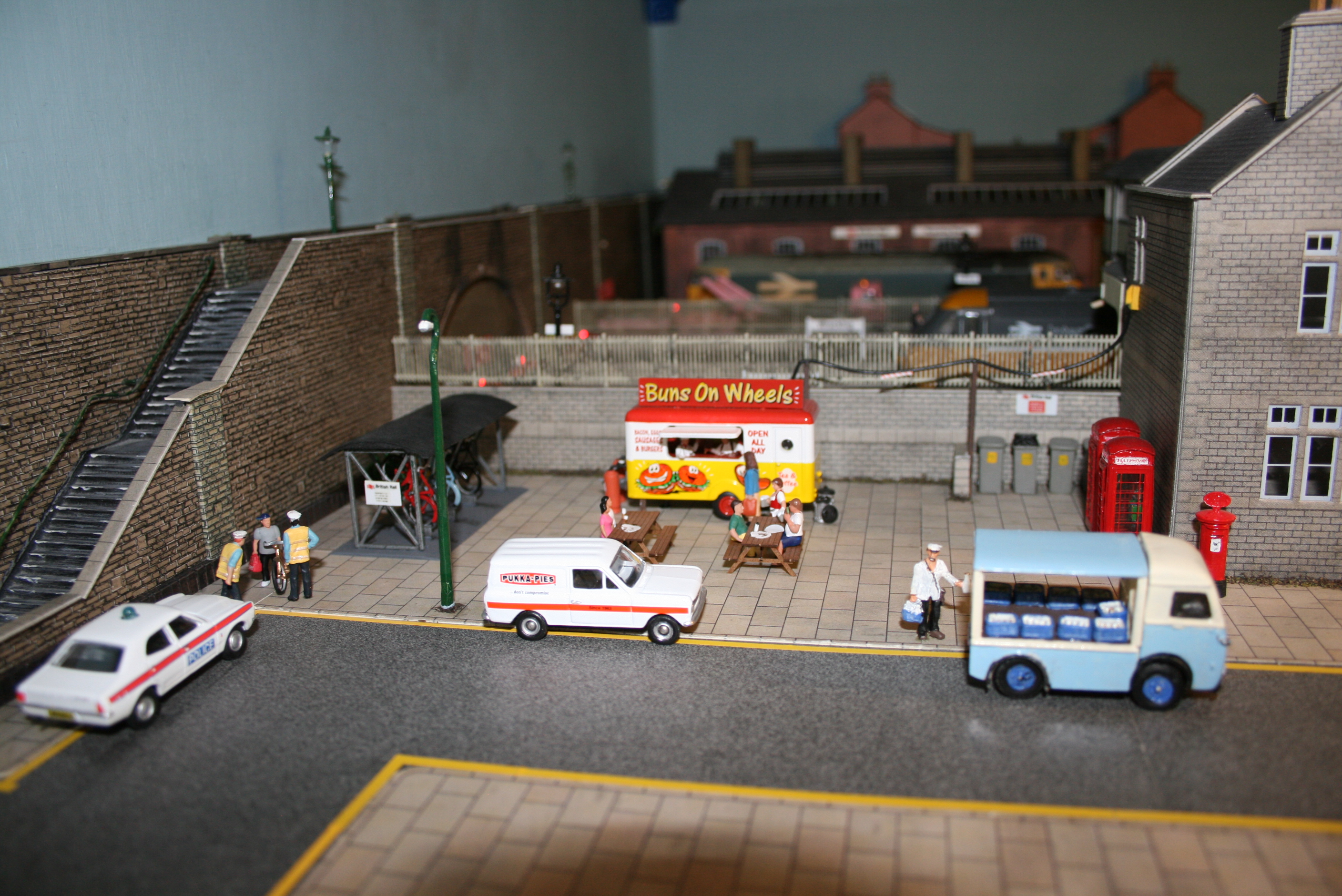 |
|
The Scene The model takes a snapshot around 1980 as Wracking serves its final railway purpose as a haven for soon to be replaced main line diesel locos and passenger rolling stock in various liveries, and a variety of ages of DMUs. The layout shows the original slightly neglected canal basin area with the now partially used station building and half used ex GWR (now NCL warehouse) at the rear. It is viewed at 4ft 4" from the floor from the carpark at the station front, and divided into 5 areas.
Along the right edge the Bridge Street shops and access road (Station Yard) down into the basin. |
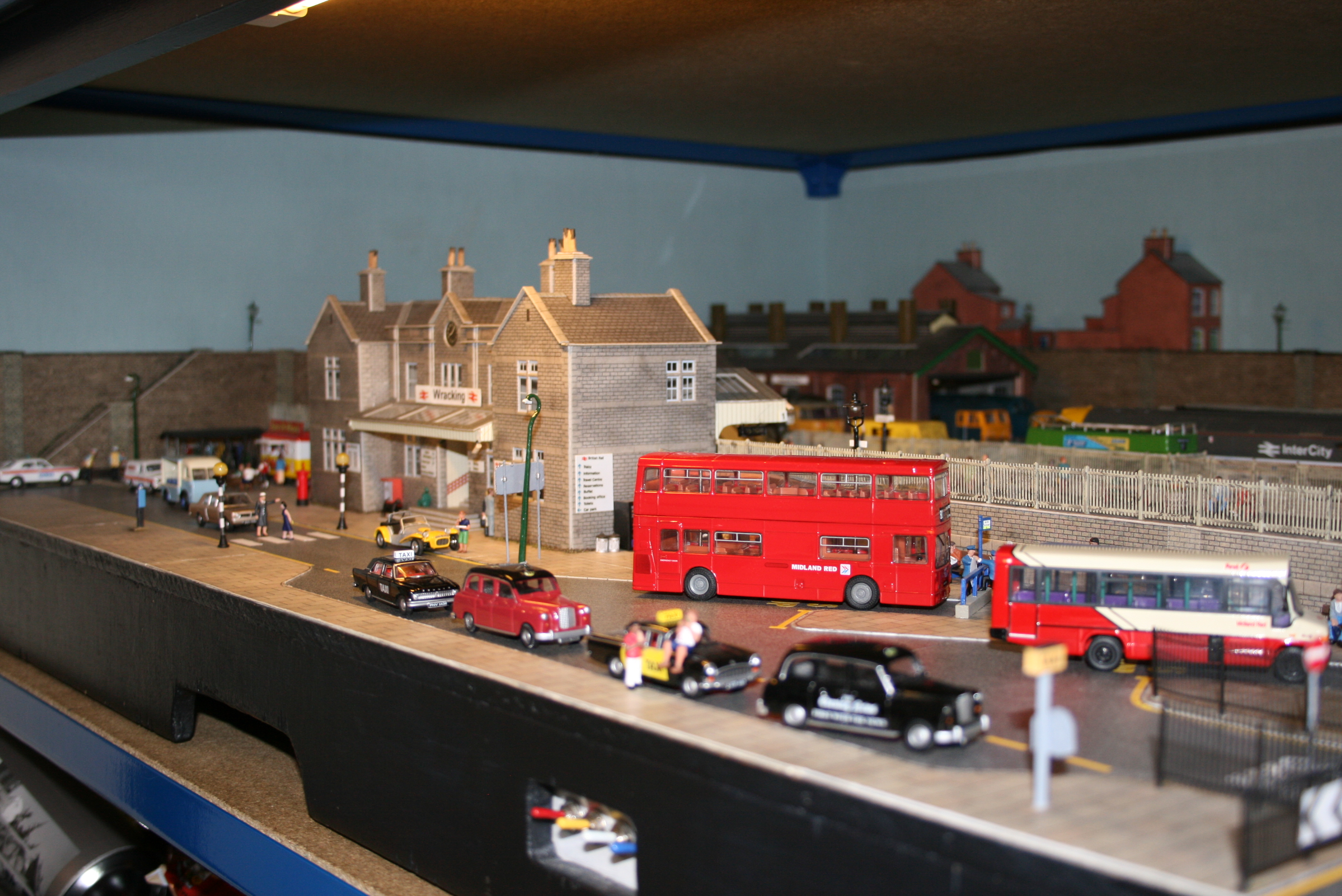 |
|
Construction and Operation Living in a flat, the 3rd bedroom became the spare room/garage/loft/shed type place filled with racking for everything. One shelf came available (domestic arm twisting) and the described layout was built there. There is a flat shelf 8ft x 3ft, with 11" between shelves. The back-scene and retaining wall is a fixed letter E shape with its open ends facing forwards and 2 baseboards located by pattern makers' dowels on 3" deep frames to (hiding the under board wiring) slid in between the prongs. The track is Peco code 100 and the points are insulfrog thrown by under board Seep motors activated through a CDU with probe and studs. It is 12vDC with one walkabout Gaugemaster controller with a schematic diagram of the track plan on the front with the studs and isolation switches. Various lighting (none in buildings - its daylight after all) on buffers, pedestrian crossings, flashing yellow on plant vehicles, and blue on the police car fed from a separate 12v transformer. | |
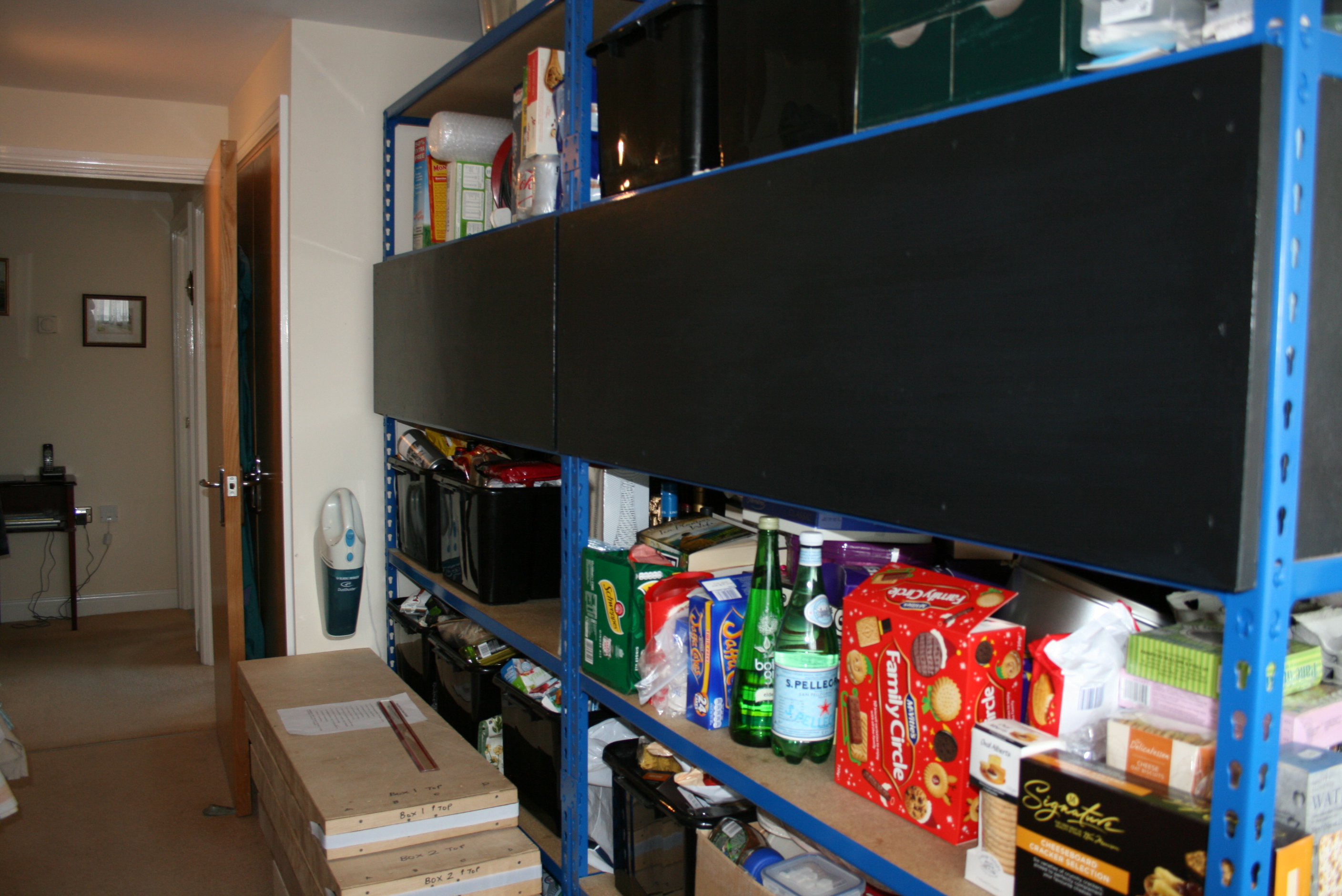 |
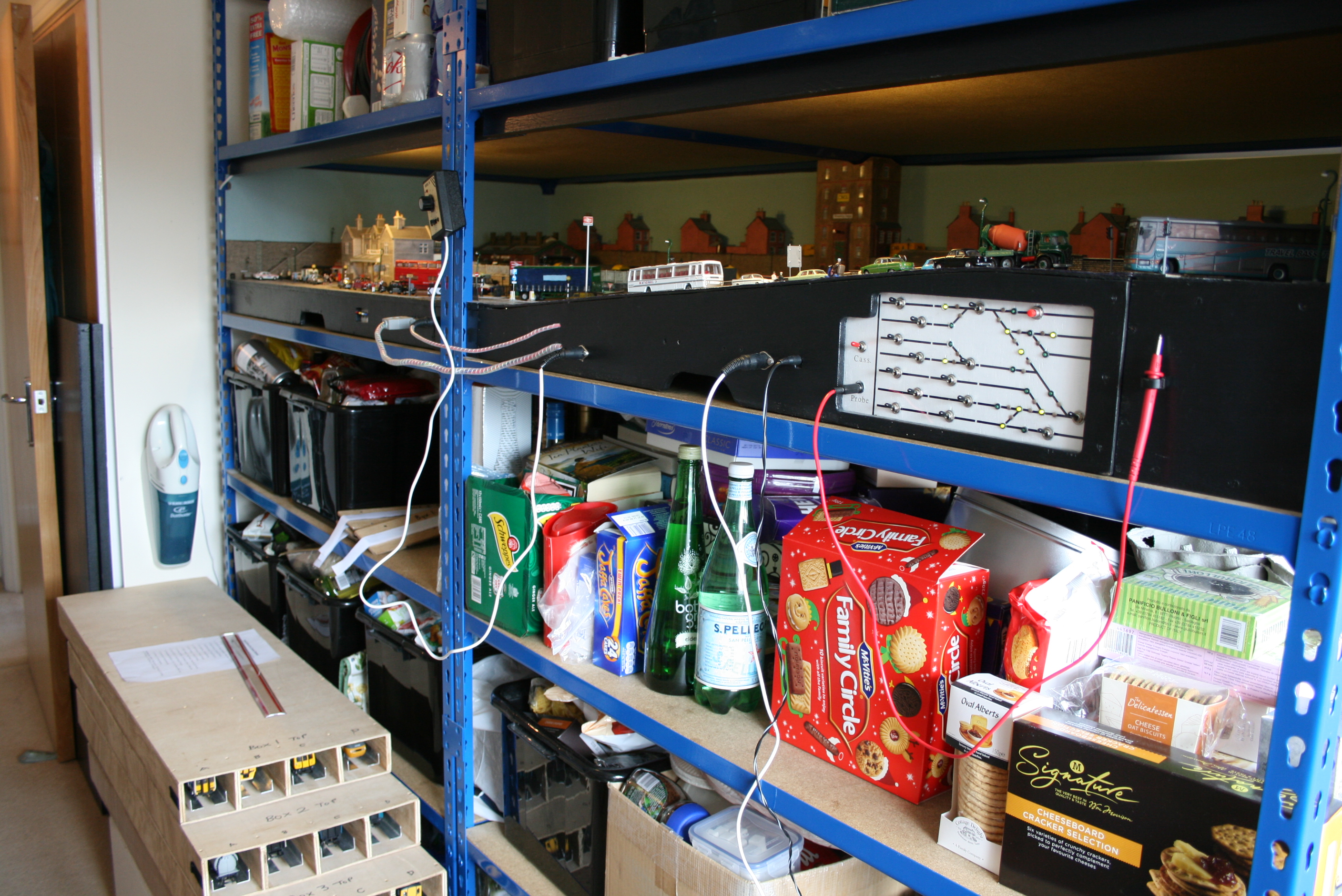 |
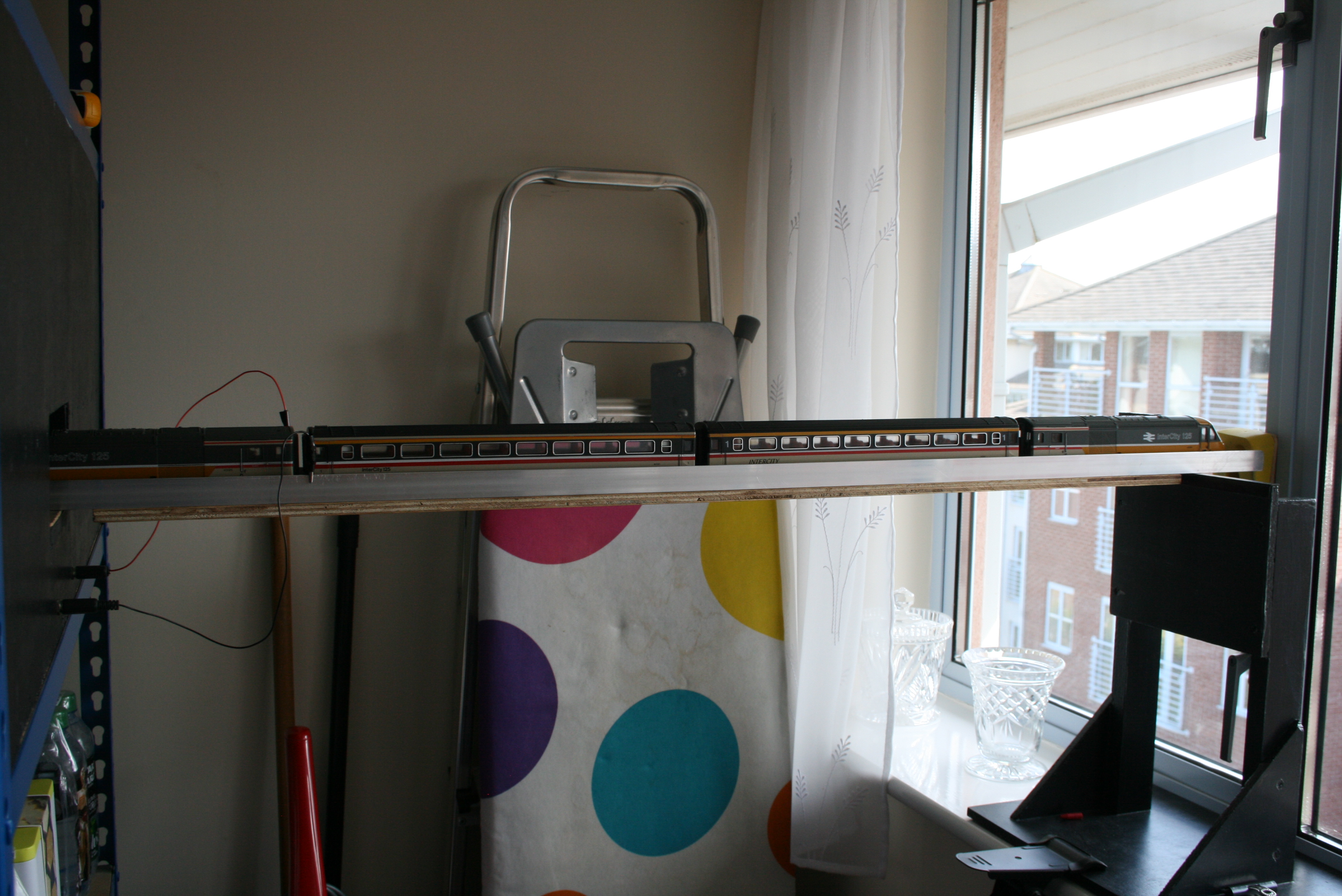 |
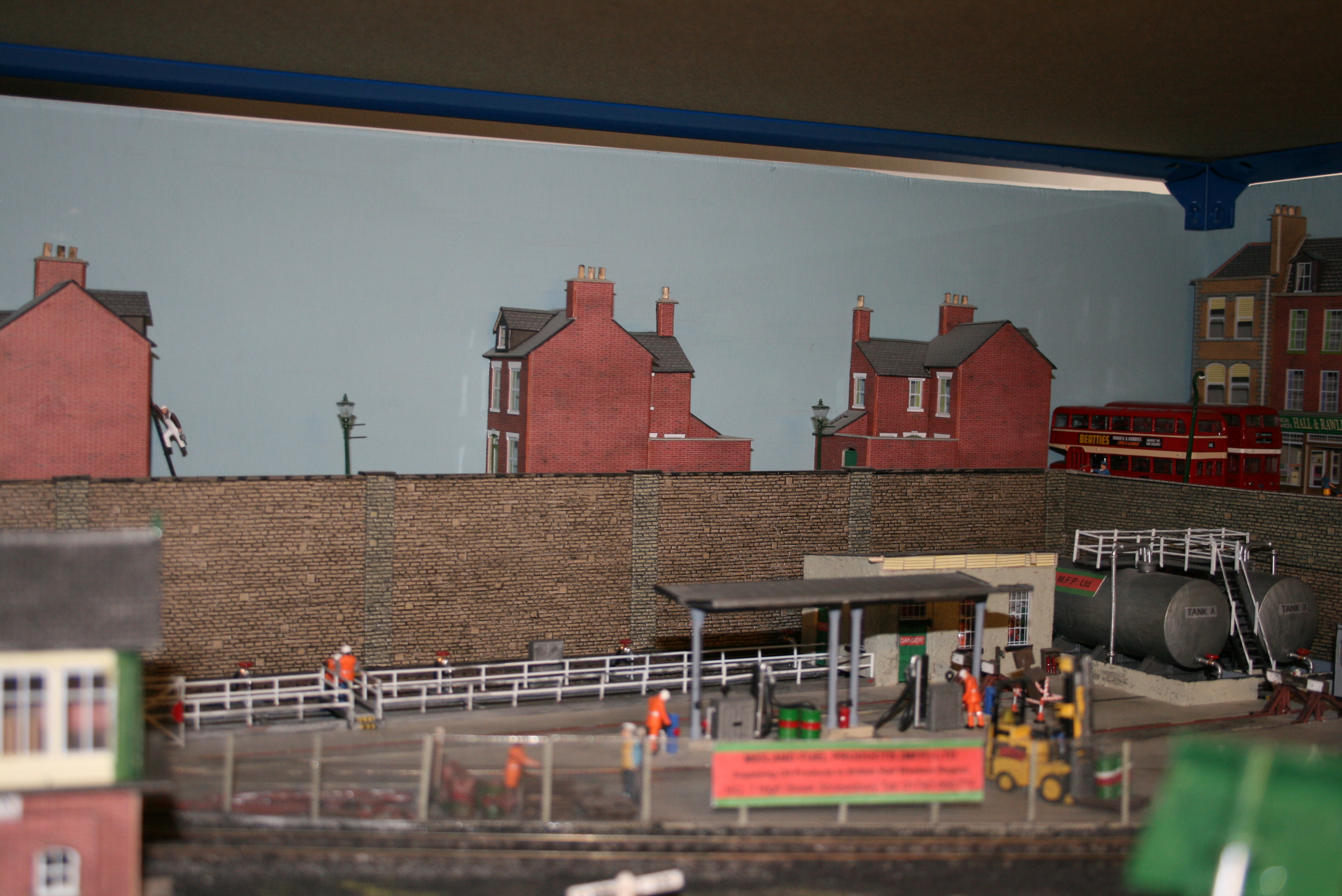 |
All trains are a maximum of 44" long to fit the cassettes beyond Bridge Street to the window! Most traffic is passenger orientated
both loco hauled and DMUs with occasional tanker trains to replenish the refuelling depot and/or Cookson's Transport from nearby Stanlow Oil Refinery.
Two 08 shunters shuffle stock around for availability, but mainly each loco hauled train arrives, a freshly serviced loco couples on the free end and hauls the
train away allowing the relieved loco to proceed for servicing and refuelling. There is no set timetable, but on such a small terminus layout with 8 different loco hauled passenger trains, 8 different DMUs, 3 different tanker trains, 1 HST Intercity set, and a further 8 locos on shed (including the 2 shunters) there is always something going on and plenty of manoeuvring to get the right loco back on the right train before the end of the day! |